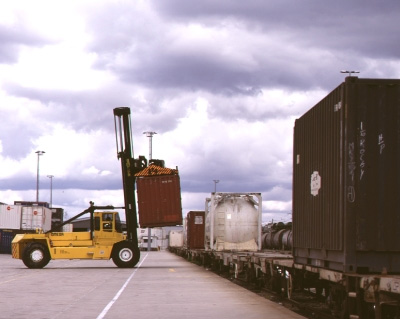
‘Moving Freight’ outlines Queensland’s ten-year strategy and policy direction for the freight system. Its objective is ‘to facilitate the efficient movement of freight.’
Its four main functions are to:
Provide clear direction about government’s policy for the freight system. Deliver actions to target freight investment and the movement of freight by the most efficient mode over the short term (1–2 years), medium term (3–5 years), and long term (6–10 years). Facilitate development of key transport infrastructure to support seamless modal integration. Ensure safety and security of freight vehicles on the transport system.
The policy document says Queensland’s freight task is rising rapidly, and is forecast to increase from 881 million tonnes in 2009-10 to 1,550 million tonnes in 2020-21.
The draft strategy outlines short, medium and long-term actions to move freight onto rail and improve the efficiency of the road freight. It identifies 38 actions to support the growth of freight in the resources, agriculture, construction and tourism sectors, including:
Preserving train paths on regional rail lines for non-coal freight. Making major freight routes more resilient to floods. Better collection and analysis of freight data. Continuing to reduce red tape for heavy vehicle permits.
“There are many challenges confronting the freight task across the state. The cost of infrastructure, geographical distances, transport hub bottlenecks, and managing the impact of extreme weather events all affect our freight network,” the paper says.
Moving Freight outlines the Queensland Government’s ten-year strategy to develop a multi-modal freight network, breaking it down into six focus areas:
Priority one: expand the use of rail freight
Develop the North Coast Line, west and south west rail systems and Mount Isa to Townsville rail corridor. Provide higher priority for rail freight. Improve regional rail for agricultural and general freight.
Priority two: increase road freight network access
Deliver improved heavy vehicle access for industry. Promote strategic road freight routes for higher productivity vehicle access. Provide an Oversize and Overmass (OSOM) Network. Expand heavy vehicle access for the agricultural sector.
Priority three: greater freight infrastructure investment
Enable industry investment in the freight network. Promote multi-modal investment needs. Release upgrade strategies for the Flinders and Barkly, Peak Downs and Capricorn highways. Deliver a heavy vehicle action plan to improve access.
Priority four: support future freight growth
Support an inland rail freight strategy. Enable better industry coastal shipping services. Map freight network flood immunity.
Priority five: better freight policy and information
Support National Land Freight Strategy. Support National Heavy Vehicle Regulator and national law. Develop better freight data and information systems. Employ technology to manage heavy vehicles.
Priority six: engage industry for better freight outcomes
Support freight research and development. Deliver heavy vehicle rest areas with industry. Work with freight industry councils.
Finalisation of the strategy is expected to occur by late 2013. Feedback is now being sought on the draft Moving Freight strategy, with submissions due by Monday, 12 August 2013. (90)





